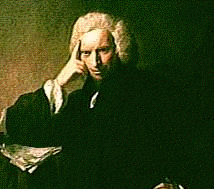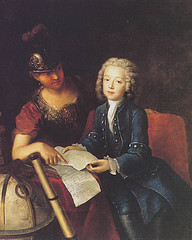“Formosa” is both a province in Argentina and the former name of Taiwan.
Curiously, those locations are on precisely opposite sides of the earth. Noon at one is midnight at the other, and midwinter at one is midsummer at the other.
“Formosa” is both a province in Argentina and the former name of Taiwan.
Curiously, those locations are on precisely opposite sides of the earth. Noon at one is midnight at the other, and midwinter at one is midsummer at the other.
In crossing the Atlantic, in the month of November, 1749, the crew of an English ship observed a large ball of blue fire rolling on the water. It came down on them so fast, that before they could raise the main-tack, they observed the ball to rise almost perpendicularly, and within a few yards of the main chains: It went off with an explosion as if hundreds of cannon had been fired off simultaneously, and left behind it a great smell of brimstone. The main-top-mast was shattered into a thousand pieces, and spikes driven out of the main-mast which stuck in the main deck. Five seamen were knocked down, and one of them greatly burnt, by the explosion. The fireball was of the apparent size of a large mill-stone, and came from the N. E.
— Cabinet of Curiosities, Natural, Artificial, and Historical, 1822

Lawrence Sterne, after a lifetime of peculiarities, and becoming notorious as an eccentric, curious and able writer, at his death was buried in a graveyard near Tyburn, belonging to the Parish of Mary-le-bone, and the ‘resurrection man’ disinterred his corpse and conveyed it to the professor of anatomy at Cambridge where being laid upon the dissecting table, was at once recognized by one of those present who knew him well while living.
— Bizarre Notes & Queries, February 1886
On April 25, 1908, the American liner St. Paul collided in the English Channel with the cruiser HMS Gladiator, killing 27 sailors.
Ten years later the St. Paul was chartered by the Navy to serve as a troopship in World War I. While in Brooklyn to be fitted out and repainted, she heeled over mysteriously in New York Harbor. Divers found that a port had been left open, flooding the lower boiler room.
No one ever discovered a reason for this, but it was noted that the St. Paul sank at 2:30 p.m. on April 25, 1918 — 10 years almost to the minute after she had sunk the Gladiator.
James, Earl of Lonsdale, sent a Christmas pie to King George III, which contained 9 geese, 2 tame ducks, 2 turkeys, 4 fowls, 6 pigeons, 6 wild ducks, 3 teals, 2 starlings, 12 partridges, 15 woodcocks, 2 Guinea fowls, 3 snipes, 6 plovers, 3 water-hens, 1 wild goose, 1 curlew, 46 yellow-hammers, 15 sparrows, 15 chaffinches, 2 larks, 4 thrushes, 12 fieldfares, 6 blackbirds, 20 rabbits, 1 leg of veal, half a ham, 3 bushels flour, and 2 stones of butter. It weighed 22 stones, was carried to London in a two horse wagon, and if it was not as dainty as the celebrated pie containing four-and-twenty blackbirds, which, when the pie was opened, began to sing, it was, at all events, a ‘dish to set before the king.’
— Bizarre Notes & Queries, January 1886

“The Hartford Times tells a curious story of a flock of crows in that vicinity who recently lost their way in a fog. They lost their bearings at a point directly above the South Green, in Hartford. For a good while they hovered there, coming low down, circling and diving aimlessly about, like a blindfolded person in ‘blind man’s buff,’ and keeping up a hoarse cawing and general racket beyond description. It was plain enough that of the entire company each individual crow was not only puzzled and bothered, but highly indignant, and inclined to utter ‘cuss words’ in his frantic attempts to be heard above the general din, and tell the others which way to go. Once or twice the whole flock swept down to a distance of not more than one hundred feet above the street. Finally, after going around for many times, they saied away in a southerly direction, evidently having got some clue to the way out of the fog, or desperately resolved to go somewhere till they could see daylight.”
— Frank H. Stauffer, The Queer, the Quaint and the Quizzical, 1882
On Oct. 17, 1917, the sailing schooner Zabrina was found hard aground on the Cherbourg Peninsula in northwestern France. She had sailed from the English port of Falmouth two days earlier and should have made fast passage across the English Channel. No trace of her four-man crew was ever found.
In the Philosophical Transactions for 1712, W. Cheselden, a celebrated anatomist, describes the dimensions of some human bones of an extraordinary size, which were dug up near St. Alban’s, in Hertfordshire. The circumference of the skull lengthwise was twenty-six inches, and its breadth twenty-three inches. The greatest diameter of each os innominatum was twelve inches. The left os femoris was twenty-four inches long, and the right one was twenty-three inches in length. Each tibia was twenty-four inches long. If all the parts bore a due proportion, this man must have been eight feet high. The bones were found near an urn, inscribed ‘Marcus Antoninus,’ on the site of a Roman camp.
— Edward J. Wood, Giants and Dwarfs, 1868

“In July 1822, the wife of the man who superintends the decoy ponds in the parish of Great Oakley, near Harwich, took an egg from a hen’s nest, in which was a remarkable discolouration. She kept it about a week, and, upon breaking it, observed something within alive, which so alarmed her, that she let it fall, and ran for her husband who was close by, and immediately came, and found lying on the ground, surrounded with the contents of the egg, an animal of the lizard species alive, but incapable, from weakness, of getting away. The contents of the egg were fœtid, contained a very small portion of yolk, and with the albumen, not more than sufficient to half fill the shell. The animal proved to be a land swift, speckled belly, about four inches in length, nothing remarkable in its form, except its hind legs being longer than usual. It died shortly after being out of the egg. The man has it dried for the inspection of the curious.”
— Colchester Gazette, cited in The Cabinet of Curiosities, 1824

German prodigy Jean-Philippe Baratier squeezed a lifetime’s work into less than two decades. Born in 1721 to a Huguenot minister near Nuremberg, he was polyglot from birth — his father spoke to him only in Latin, his mother in French, and the servants in High Dutch. By age 5 he was reading the Old and New Testaments in Greek and translating them into Latin and Hebrew. He matriculated at Altorf at 10, and three years later he was introduced to the king of Prussia and received into the Royal Academy. His interests expanded into navigation, astronomy, and history, including the Thirty Years’ War, the succession of bishops of Rome, and an inquiry into Egyptian antiquities. When he died at age 19, he left behind 11 published works and 26 manuscripts.